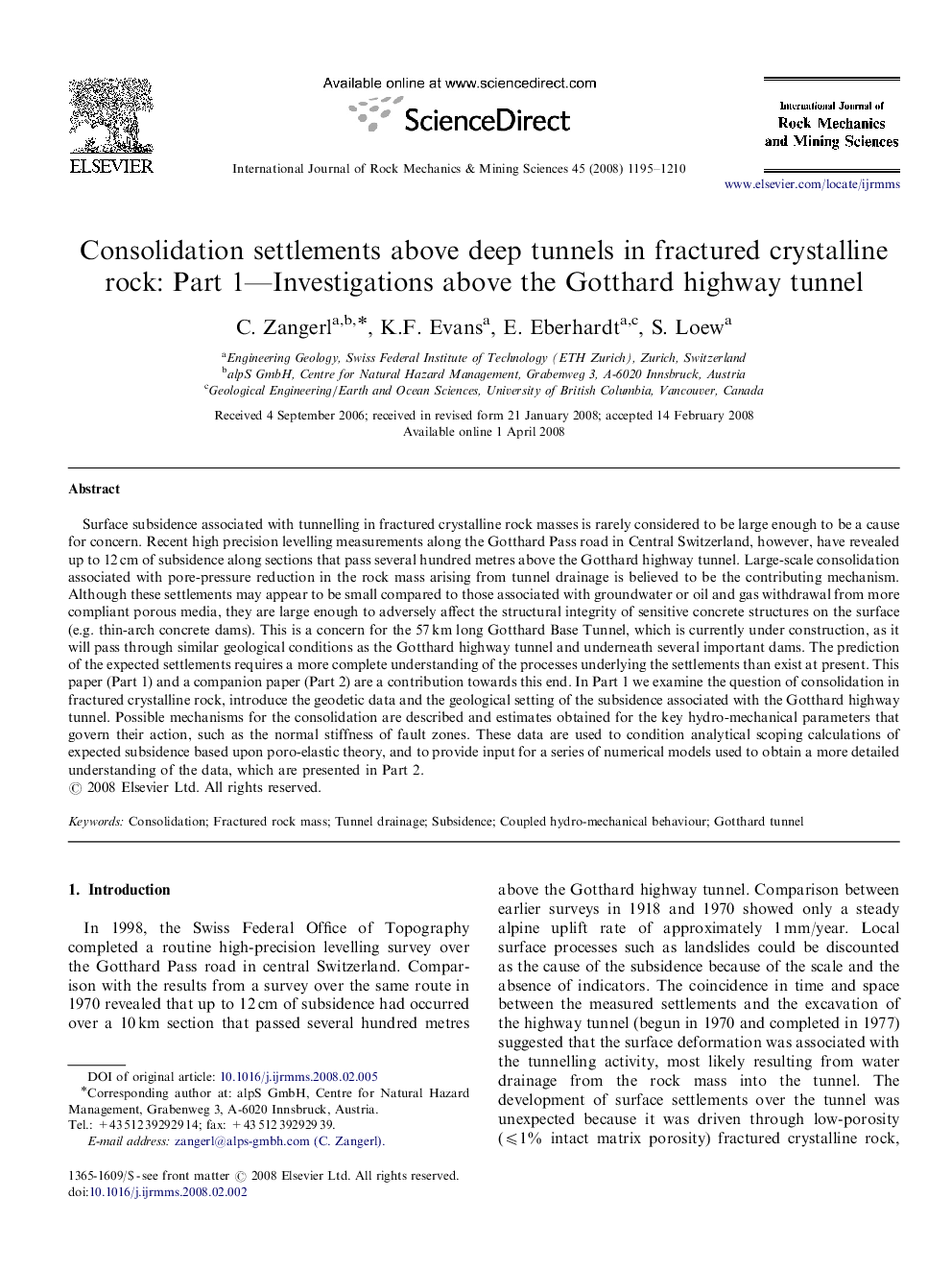| Article ID | Journal | Published Year | Pages | File Type |
|---|---|---|---|---|
| 810109 | International Journal of Rock Mechanics and Mining Sciences | 2008 | 16 Pages |
Surface subsidence associated with tunnelling in fractured crystalline rock masses is rarely considered to be large enough to be a cause for concern. Recent high precision levelling measurements along the Gotthard Pass road in Central Switzerland, however, have revealed up to 12 cm of subsidence along sections that pass several hundred metres above the Gotthard highway tunnel. Large-scale consolidation associated with pore-pressure reduction in the rock mass arising from tunnel drainage is believed to be the contributing mechanism. Although these settlements may appear to be small compared to those associated with groundwater or oil and gas withdrawal from more compliant porous media, they are large enough to adversely affect the structural integrity of sensitive concrete structures on the surface (e.g. thin-arch concrete dams). This is a concern for the 57 km long Gotthard Base Tunnel, which is currently under construction, as it will pass through similar geological conditions as the Gotthard highway tunnel and underneath several important dams. The prediction of the expected settlements requires a more complete understanding of the processes underlying the settlements than exist at present. This paper (Part 1) and a companion paper (Part 2) are a contribution towards this end. In Part 1 we examine the question of consolidation in fractured crystalline rock, introduce the geodetic data and the geological setting of the subsidence associated with the Gotthard highway tunnel. Possible mechanisms for the consolidation are described and estimates obtained for the key hydro-mechanical parameters that govern their action, such as the normal stiffness of fault zones. These data are used to condition analytical scoping calculations of expected subsidence based upon poro-elastic theory, and to provide input for a series of numerical models used to obtain a more detailed understanding of the data, which are presented in Part 2.
